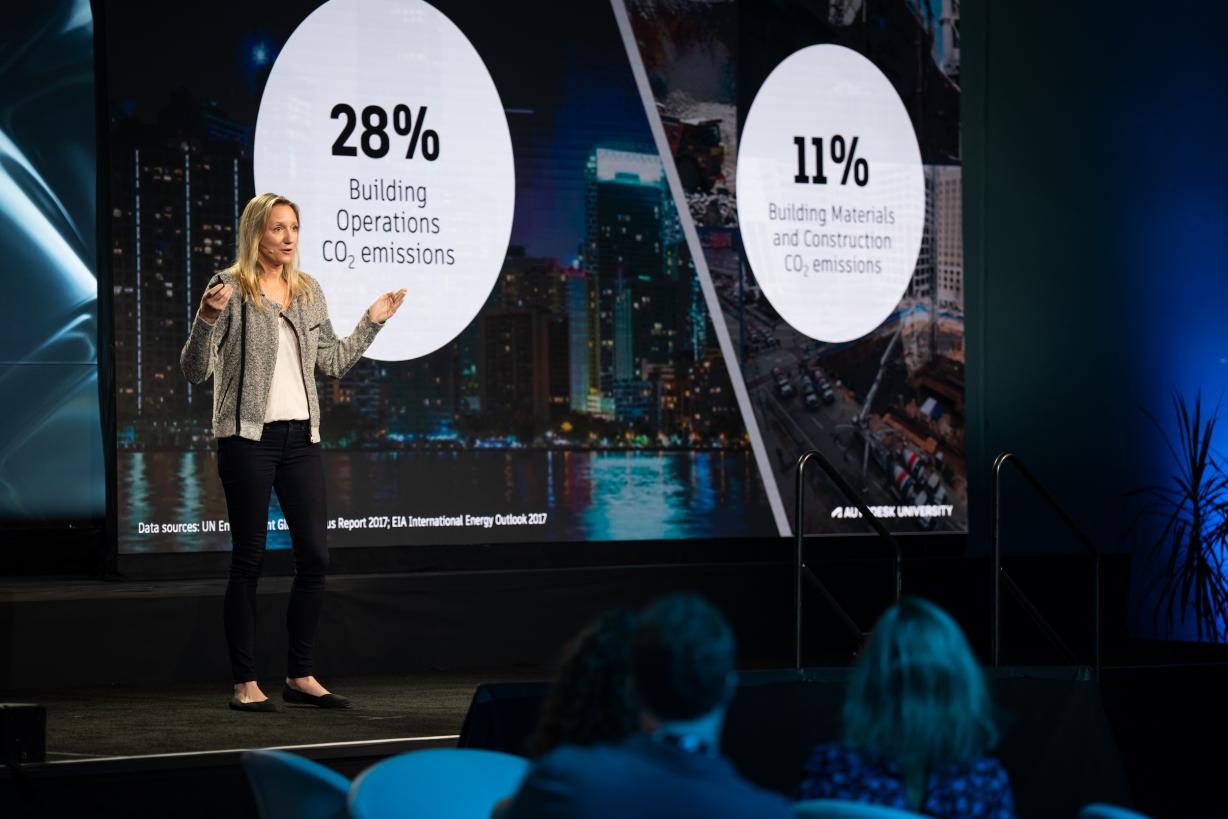Decarbonizing by Design: Sustainability Sessions from AU 2022

Whether you joined us in New Orleans or participated in the digital experience, you probably noticed that sustainability was everywhere at AU 2022. On the main stage, in the Leadership Workshops, and in meetups and learning sessions, teams from across industries shared their workflows, processes, and tips for reducing negative impact. Given the challenges we face with climate change and waste, there’s no question that success tomorrow depends on sustainability today.
Autodesk is committed to building a sustainable future. That starts with the choices we make as a company—as our FY22 Impact Report makes clear. But at a larger level, it’s bigger than that—it’s about the possibilities we help to create for our customers through our products.
As Joe Speicher, vice president of ESG and impact at Autodesk, said in the Impact Theater, “We are focusing on connecting the silos within the AEC and manufacturing space to have the end-to-end solution such that you can look at the whole lifecycle of the project. We’re also connecting the relevant sustainability data to your models to be able to optimize and soon automate those sustainability decisions that will lead the way to decarbonization. And lastly, we're thinking a lot about adoption of these new workloads, new ways of working and ways of collaborating, such that we can achieve the sustainable outcomes.”
Architecture, engineering & construction sessions
Our built world already accounts for 38% of greenhouse gas (GHG) emissions globally every year—even as the demand for new buildings is increasing with the global population. Experts estimate that we’ll need to build an average of 13,000 buildings every day to meet worldwide needs. And there’s a great business case for building green. It reduces operating costs in the first year by 10%, and owners report that it can increase abuilding’s value by more than 9%. Check out these AU 2022 resources to learn how to build better:
- Sustainable construction means choosing sustainable materials. The Transparency Catalog makes it easy to choose and procure greener materials for building projects, and the Transparency Catalog Project Builder enables stakeholders to centralize data and collaborate across design, build, and operate. Terry Swack explains how it works.
- The Embodied Carbon in Construction Calculator (EC3) provides a similar service, allowing you to compute your carbon footprint in early-phase design. Phil Northcott and Tim Burnham share how to put it to work to create more sustainable infrastructure.
- Can we get every building project to carbon neutral? Thesla Collier shares the process she pioneered for building lifecycle analysis using Revit, BIM 360, the EC3, and Microsoft PowerBI.
- Mathias Nall and Karin Hurtig explain how to weigh the impact of different design and material options while still in the design phase, engage customers in the process—and have fun doing it.
Product design & manufacturing sessions
Manufacturing is responsible for nearly 20% of global GHG emissions globally, and the growth of the global middle class is driving greater demand for consumer goods. Experts estimate that meeting that demand will require at least twice the energy and resources we currently use. Digitization can help us consume fewer resources, choose more sustainable materials, and design things for reuse, disassembly, and recycling. It can also help us create products that require less energy to operate—whether that’s a car or a lightbulb.
- Designers and manufacturers have many process options, so how should they decide on which is the most sustainable? Fusion 360 can help. Matt Oosthuizen and Robert Bowerman show you how to compare additive, subtractive, and hybrid workflows and analyze by energy consumption and waste metrics. Bonus: Roopinder Tara has a great summary of their class in Engineering.com.
- Creating FDM filament from recycled single use plastic? 3D printing with demolition waste instead of virgin sand? Mark Chester and Peter Gough share the pioneering research efforts of the PrintCity Network Programme at Manchester Metropolitan University.
- Lightweighting for vehicles is an important way to reduce fuel consumption. Peter Champneys and Matt Hill used generative design in Fusion 360 to create a lighter automotive component for an electric hypercar. Hear the story and the lessons learned.
- Lightweighting works for planes, too. The team from Project MOnACO, winner of an Autodesk Excellence Award, shares their process using generative design to design and additively manufacture the center frame for a jet turbine that is 34% lighter than its predecessor—reducing fuel consumption for air travel.
Ready for more? You’ll find dozens of sessions focused on decarbonization and impact at Autodesk University.




